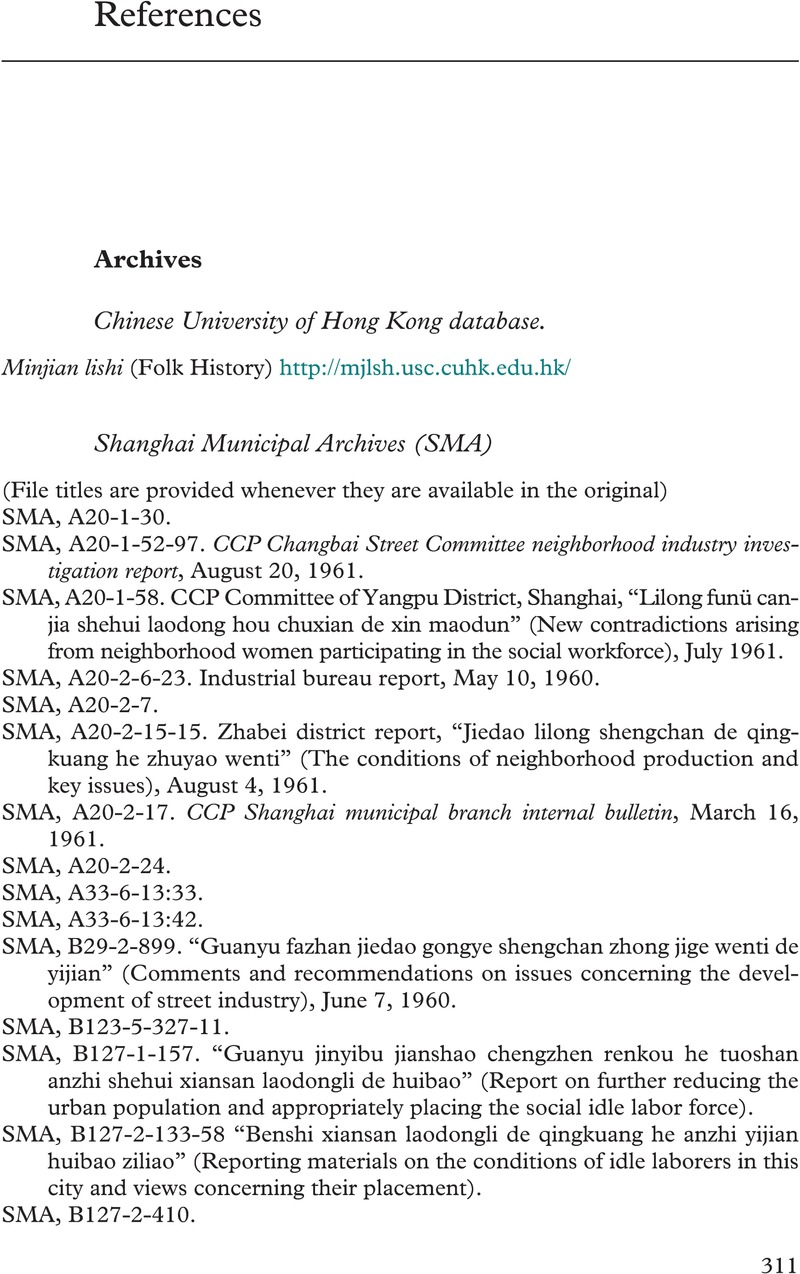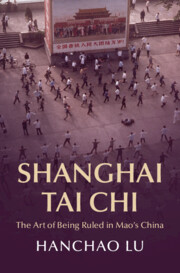Book contents
- Shanghai Tai Chi
- Cambridge Studies in the History of the People’s Republic of China
- Additional material
- Additional material
- Shanghai Tai Chi
- Copyright page
- Dedication
- Contents
- Figures
- Maps
- Tables
- Acknowledgments
- Notes on the Text
- Introduction
- Part I The Condemned
- Part II The Liberated
- Part III Under the French Parasol Trees
- Conclusion
- Appendix
- Notes
- References
- Index
- References
References
Published online by Cambridge University Press: 21 April 2023
- Shanghai Tai Chi
- Cambridge Studies in the History of the People’s Republic of China
- Additional material
- Additional material
- Shanghai Tai Chi
- Copyright page
- Dedication
- Contents
- Figures
- Maps
- Tables
- Acknowledgments
- Notes on the Text
- Introduction
- Part I The Condemned
- Part II The Liberated
- Part III Under the French Parasol Trees
- Conclusion
- Appendix
- Notes
- References
- Index
- References
Summary

- Type
- Chapter
- Information
- Shanghai Tai ChiThe Art of Being Ruled in Mao's China, pp. 311 - 344Publisher: Cambridge University PressPrint publication year: 2023



